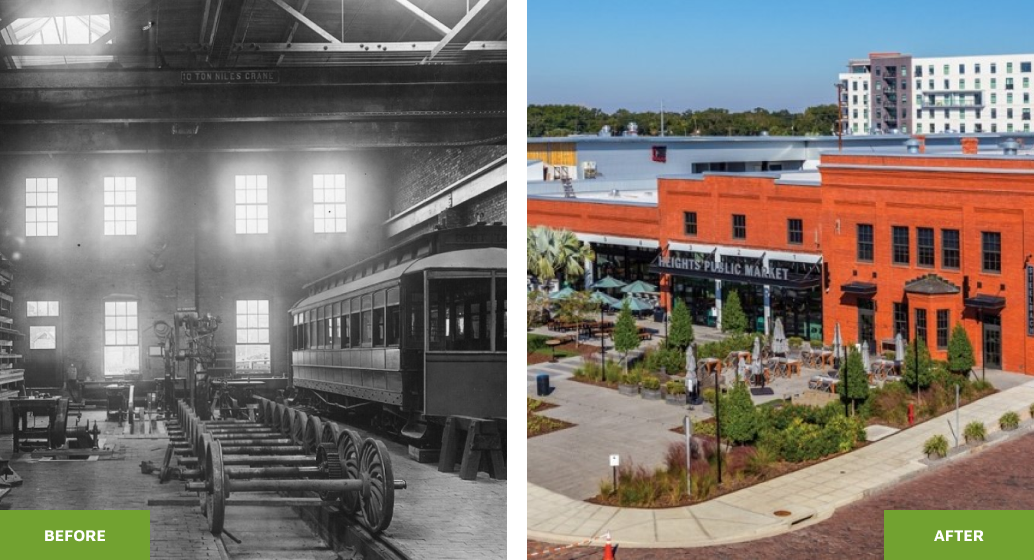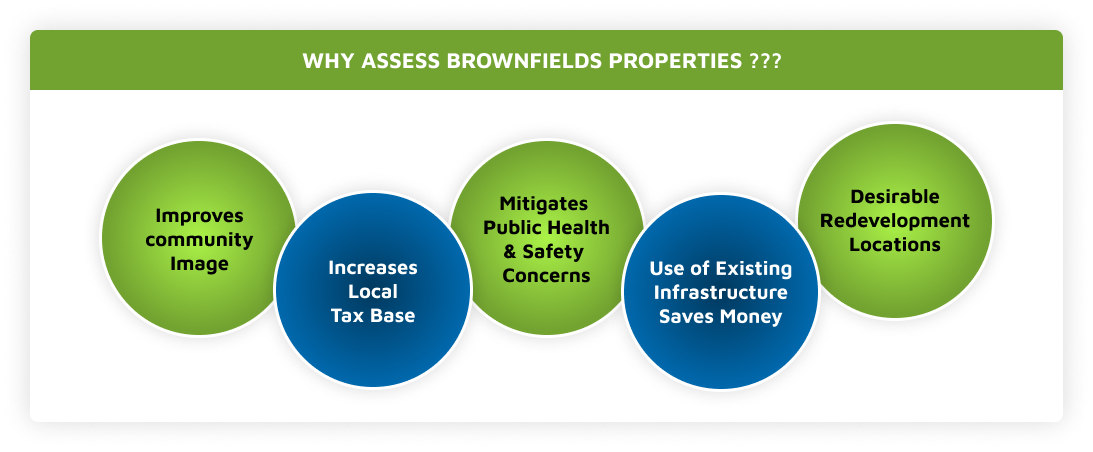
Introduction
EPA’s Brownfields Program provides grants and technical assistance to communities, states, tribes and others to assess, safely clean up and sustainably reuse contaminated properties.
What Is A Brownfield?
As defined by the U.S. Environmental Protection Agency (EPA), a brownfields is "real property, the expansion, redevelopment or reuse of which may be complicated by the presence or potential presence of a hazardous substance, pollutant, or contaminant." Often it is the PERCEPTION of contamination that keeps properties from being redeveloped. Once the "stigma" is gone, properties can be returned to productive use.
Where Are Brownfields?
Almost all communities in Florida are affected by brownfields sites although not always visible. Abandoned and underutilized properties exist in big communities, small towns, suburbs, and in rural areas which may include former gas stations, dry cleaners, industrial and commercial areas, manufacturing facilities, abandoned fuel tanks, residential areas, or green spaces and parks.
How does this benefit your community?
The City of Tampa and a broad representation of residents, business owners, community leaders and governmental agencies have long dreamed of a renewed West Tampa. This includes quality, affordable workforce housing and new health services through a community-based healthcare center, in addition to improved physical and visual access to the riverfront and enhanced outdoor open space and park amenities for seniors, families.
This project will assist in providing financial support and technical assistance for brown fields activities by promoting partnerships, assessing environmental conditions, strengthening the economic marketplace, sustaining reuse of under-utilized properties and protecting public health and the environment.
How Does This Brownfields Grant Benefit You?
An Environmental Site Assessment is a free service if approved. The grant is funded by the U.S. EPA to conduct Phase I and, if necessary, Phase II ESAs on eligible brownfields properties at no cost to you. Your property becomes re-developable and more marketable. In addition, these assessments will fulfill the due diligence requirements often required as part of a property transfer or acquisition.

What's Included In An Environmental Assessment?
A Phase I ESA is a preliminary examination of a property to determine the potential for contamination. It includes a review of existing and historical land uses and records, a site visit to visually inspect the property, and interviews with current and past owners. Based on these findings a Phase I ESA Report is generated outlining any recognized environmental conditions {RECs) associated with the property that may complicate the intended outcome for the property. If RECs are not identified, the property is immediately cleared for reuse/redevelopment. If RECs are identified, a Phase II assessment may be necessary which includes the collection of actual soil and/ or groundwater samples for chemical analysis. Grant funds will also be used to facilitate cleanup and redevelopment planning for properties where contamination has been identified above regulatory levels and to assist property owners with determining the appropriate state programs to address contamination issues. However, remediation, waste disposal, and site reconstruction/ restoration are not included in the grant program.
Brownfield Grant Goals & Objectives:
The goals of this grant is to assist West River communities with redevelopment of under-utilized, blighted properties and address community environmental problems. In addition, the City of Tampa aims to achieve the following objectives:
- Protect/improve environmental conditions and natural resources
- Improve quality of life by reducing environmental contaminants
- Develop parks, trails, and greenspace
- Develop affordable housing, address "food deserts"
- Stimulate commercial and industrial growth
